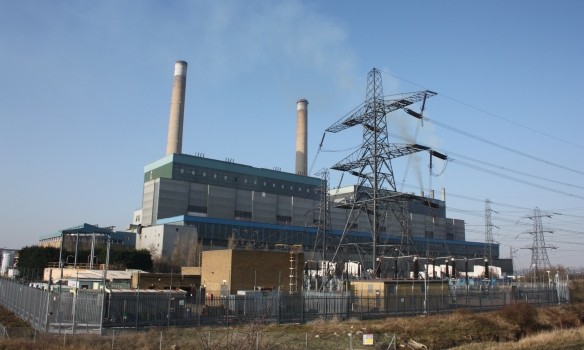
Summary of Key Facts – Tilbury Biomass Power Plant
Tilbury Power Station is located on the River Thames, in Tilbury, Essex. Completed in 1969, the plant was originally built to burn coal, producing a combined capacity of 1428MW of electricity from four generating units, supplying electricity to 1.4m people in the surrounding area (since it’s construction, one of the four generating units was decommissioned bringing the capacity down to 1062MW).
In September 2010, following successful tests, RWE, the owners of the Tilbury power plant, opted to convert the plant to only burn biomass, and on 4th March 2011, Tilbury Power Station produced it’s last kWh of electricity from coal.
After this, Tilbury Power Station began to burn 100% biomass fuel, using sustainably sourced renewable wood pellets. In theory, this means that the plant is now carbon neutral, as the carbon dioxide released during the burning of the fuel is offset by the original tree source absorbing the gas during their growth.
It is expected that the Tilbury Biomass Power Station will produce almost 10% of the UK’s renewable energy output during 2012, but perhaps more importantly the greenhouse gas emissions will be reduced by approximately 70% when compared to it running on coal. This has come at a slight cost though, as there has been a decrease in capacity to 750MW, due to the lower energy density of biomass compared to coal.
Sustainable Legacy of the Tilbury Biomass Power Plant
The decision to move to biomass was viable as a result of RWE owning the largest pelleting plant in the world. The Waycross Pelleting Plant in Georgia has a capacity to produce 750,000 metric tonnes of pellets annually, and supplies biomass plants across Europe. These pellets are delivered via Savannah Port, where they are shipped in dry bulk vessels to Tilbury.
Under the Large Combustion Plant Directive, which states that power stations have to opt in to strict emission reduction programmes or reduce their operating lifespan, 9 UK coal power plants are set to close at by 2015. Tilbury is one of the plants that is due for closure as a result of this scheme, however, due to its conversion from coal to biomass, it will certainly run until at least 2015, and despite being now more than 50 years old, the transformation could mean that the plant will continue to produce electricity well past this date.
Tilbury Biomass Power Plant Fire and the Future
Unfortunately, in February 2012, there was a fire at the power station when a stockpile of the biomass pellets accidently caught fire, highlighting the risks of storing large amounts of flammable feedstock on site. This fire was substantial, and only in June 2012 did the plant actually come back online and starts producing electricity again.
Despite this, there are many biomass plants being planned for the UK, with Centrica the latest company to submit plans to build an 80MW plant in Barrow, supplying enough electricity to meet the demands of 125,000 homes in the local area. The importance of new power plants to replace both fossil fuel and any other aging plants is vital, and if the fuel source for biomass can be sourced sustainably, plants like Tilbury clearly make sense for a greener future.












No Comments yet! Be the first one.